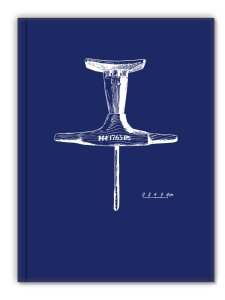 “Woodworking in Estonia,” the cult classic woodworking book, is now available for pre-publication ordering in the Lost Art Press store. The book is $29 (that price includes domestic postage) and will ship in August.
“Woodworking in Estonia,” the cult classic woodworking book, is now available for pre-publication ordering in the Lost Art Press store. The book is $29 (that price includes domestic postage) and will ship in August.
You can read more about the book and order it here.
Our version of “Woodworking in Estonia” is the first authorized translation of this classic 1960s text about hand-tool woodworking in this fascinating Northern European country. The original Estonian book was translated by the Israel Program for Scientific Translations in 1969 for the Smithsonian and the U.S. National Science Foundation.
Since then it has earned a small but loyal following of readers including Roy Underhill, who named it one of his three favorite woodworking books.
But what’s the book about? And why should anyone in North America care about this ethnographic study?
I first obtained a copy of the book about six years ago – a version that had been in the Albion College Library and then dropped from its collection. It’s a curious-looking book. The text is typewritten, not typeset like a nice book from the 1960s. And the images are terrible. Dark, murky and occasionally indecipherable.
Despite this, I read it all in one sitting. It’s a fascinating look at hand-tool woodworking during the last 2,000 years. The tools are similar to what we know, but different in places. But what struck me then – and still strikes me today – is how well these woodworkers knew their material.
It’s not a “green woodworking” book. Yes, there are times that they use green wood. But there are times they dry it in a variety of ways, steam it, bury it in dung, whatever it takes to get the job done. They take advantage of the natural shapes of the branches to make tools and furniture components.
It is, I think, a much more balanced view of what woodworking was really like during the last 300 years. The wood isn’t all perfectly seasoned for years. And it’s not all fresh from the tree. It is, instead, all of those things and more.
Also fascinating are the objects made in Estonian workshops: spoons, beer tankards, bent-wood boxes, sifters, rakes, tables, chairs, chests and all manner of household implements.
In the coming weeks we’ll publish a couple excerpts from the book. But for today, we need a short nap.
About the Price
In an effort to make “Woodworking in Estonia” accessible to all our readers, we’ve kept the price as low as possible – $29, which includes domestic shipping. We consider publishing this book both an honor and a public service. And we have tried to do the right thing at every turn.
This book is the first authorized translation, done with the full cooperation of Ants Viires (until his death in 2015) and his family, which will receive royalties from sales of the book.
We have obtained the rights to the original photos and drawings, which are crisp and clear compared to the original 1969 translation. And we are, as always, manufacturing the book to a high standard, with sewn signatures and cloth-wrapped hardcovers.
We hope you will take a chance on “Woodworking in Estonia,” like we did when we first made contact with the Viires family through woodworker David Lanneorg. Getting this book to press was a long and sometimes difficult process, but we think it was worth it, and I hope you’ll agree.
— Christopher Schwarz
P.S. We do not have any information yet on which retailers will carry “Woodworking in Estonia.” We’ll post it here when we know.